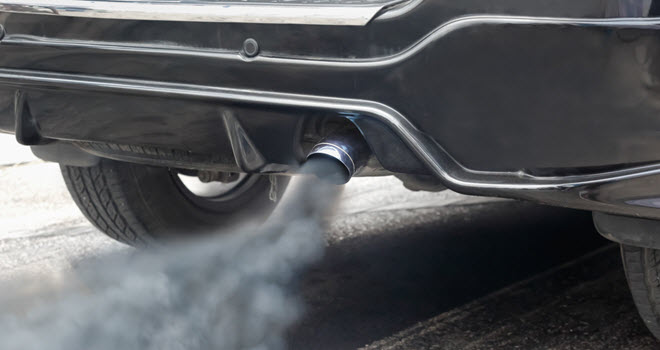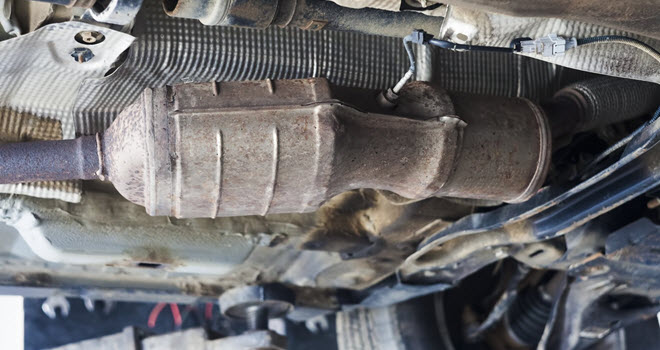Why Does Your Jaguar Have Excessive Emissions?
Posted on: March 23, 2022
In regular driving conditions, there should be no smoke emitted from your Jaguar’s tailpipe. Visible emissions (not condensation) are nearly always a sign of a problem with the engine. While this is a drawback, it does have one advantage; different problems will emit distinct colors of smoke, making analysis easier.
It’s beyond important to stop driving when it’s safe to do so, regardless of the color of the emission. In this post, we’ll look at the reasons why your Jaguar emits emissions and what you can do about it. So let’s get started straight away.
Colors of Emissions and What They Indicate
A gasoline-powered engine’s exhaust comes in three different shades of color:
- Snowy
- Dark
- Gray
Snowy Exhaust Color
The majority of snowy smoke emissions are typical. It’s a phase of the combustion cycle that occurs when we start the Jaguar’s engine. Condensation in the engine produces a mist that resembles white smoke. When the engine heats up, the moisture evaporates, and the white exhaust smoke is not visible anymore.
Excessive snowy smoke is visible long after the engine has warmed up, which generally indicates that trouble is on the way. When you first start the car and the engine fires up, snowy smoke is normal so do not panic at the first sight of such
Analysis
- Leaking coolant: Seeing odorless white smoke along with low coolant levels is a telltale sign of a coolant leak. Aside from that, milky-looking engine oil is also a sign. This indicates that the coolant has reached the combustion chamber and is being consumed. If your engine is overheating and you’re constantly topping it off with coolant, you may have a coolant leak. If you find yourself frequently topping up the coolant, chances are that you have a coolant leak.
- Faulty Fuel Pump Injector: When the fuel injectors fail, the amount of fuel delivered to the engine is reduced. The pipes also emit white smoke as a result of this. In diesel vehicles, fuel pump injector failure is a typical occurrence.
- Malfunction with the ECU: If the Engine Control Unit malfunctions, the fuel timings run risk of being thrown off. As a result, the combustion cycle will be inefficient, resulting in a lot of snowy smoke.
Dark Exhaust
The presence of dark exhaust indicates that the engine is burning too much fuel. As a result, the exhaust contains pretty much only carbon.
Analysis
- Air filter: The first item to check is your Jaguar’s air filter, as well as other intake components such as fuel pressure regulators and fuel injectors.
- Blocked fuel line: If the gasoline lines in your car are clogged, you may notice dark smoke pouring from the tailpipe. Black smoke is usually the simplest problem to identify and resolve. However, wasting fuel will harm your fuel efficiency. So don’t even consider dodging it.
- Carbonized Engine: When the engine becomes packed with carbon, this tends to happen. This necessitates a comprehensive decarbonization of the engine.
Gray Exhaust
It can be difficult to distinguish between snowy and dark smoke. Smoke can indicate a variety of things. However, if you notice gray smoke coming from your Jaguar exhaust, you can be certain the engine is in trouble.
Analysis
- Oil Burning: Gray smoke from the tailpipe could indicate that the car is burning oil or has a faulty turbocharger. Precautions should be taken as with any other colored smoke, and excessive oil intake should be avoided.
- Leakage of Transmission Fluid: Gray smoke can also indicate that your automatic transmission fluid is being burned up in the engine. In this case, a malfunctioning transmission vacuum modulator would be to blame, causing transmission fluid to be sucked into the engine and burned up.
- Clogged PCV Valve: Gray smoke could indicate a clogged PCV valve. By recycling toxic emissions back into the combustion chamber, the PCV system (Positive Crankcase Ventilation) reduces harmful emissions. When the valve becomes stuck, however, pressure can build-up, resulting in oil leaks. Fortunately, these valves are inexpensive and can be replaced quickly by a competent mechanic.

Landmark Motors to Lessen Your Jaguar’s Excessive Emissions
If you observe your car giving off excessive emissions, don’t ignore it. It’s usually the exhaust system’s cry for assistance. If you believe your Jaguar exhaust system is malfunctioning, Landmark Motors is only a phone call away.
We are a high-performance auto service center, serving customers in and around Seattle and Bellevue, WA. Our top goal is the health of your vehicle, and when you’re pleased, we’re happy! So please visit us today or give us a call to assist you in your Jaguar’s needs.



